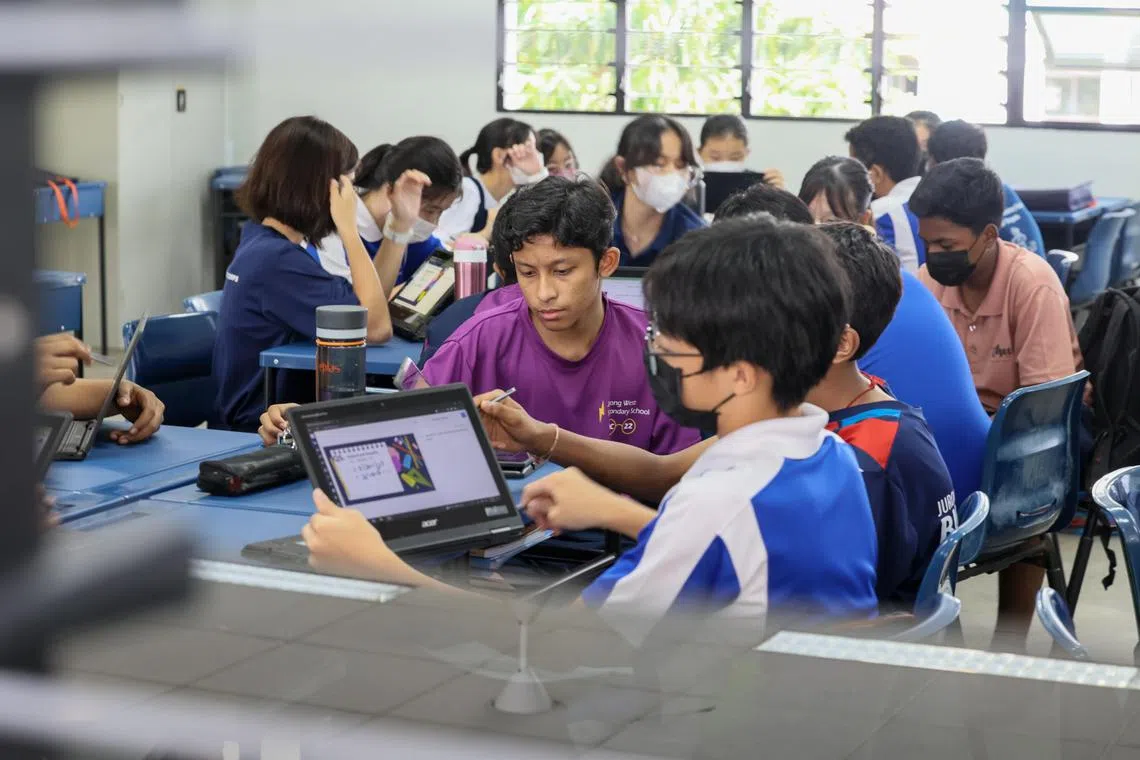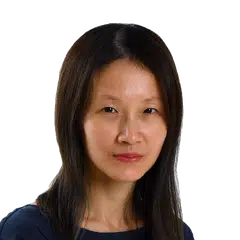From the Gallery
Time to do away with stigmatising academic labels like Normal and Express
Such labels are unhelpful. The Education Ministry is expanding pathways and taking decisive steps to reduce pigeonholing.
Sign up now: Get ST's newsletters delivered to your inbox

Full SBB will bring with it challenges, not just with timetabling but also pedagogy.
PHOTO: LIANHE ZAOBAO
Follow topic:
I wondered if it was just old wine in a new bottle, when Education Minister Chan Chun Sing announced on Wednesday that students will be posted to secondary schools via three posting groups.
After all, the PSLE score ranges for these three groups – 1, 2 and 3 – will be mapped from the existing Normal (Technical), Normal (Academic) and Express streams respectively.
Turns out, it’s not merely a rebranding exercise.
Unlike the existing streams, the posting groups are used only to admit students into secondary schools.
Past the admission stage, posting groups do not shape the secondary school experience. Students will be placed in mixed form classes, and have the flexibility to take a combination of subjects at three levels: G1, G2, and G3.
In short, students will no longer be labelled as from the “Normal” or “Express” stream – a source of stigma for many in the past who were considered to be less academically inclined.
Three years since full subject-based banding (SBB) was rolled out in 28 pilot schools
This in turn improves student diversity and social mixing – both at the school and class levels – and reduces unnecessary academic competition.
The latest changes build on questions that previous education ministers and generations of educators asked themselves: How finely differentiated do we want examination results to be as a tool for schools admission?
Then, after admission, how do we cater to students’ differing learning needs without inadvertently stigmatising certain groups?
Full SBB will bring with it challenges, not just with timetabling but also pedagogy. As Mr Chan said, it is “more work and harder work” for teachers and schools.
Ensuring the new system leads to much more inter-band mobility than was the case with streaming, will not be a simple matter of moderating higher-level content downward.
Rather, teachers have to think more deliberatively about how to communicate concepts to a more diverse class, whose subject preferences may change as their aptitudes and interests evolve.
Another interesting move is that from 2026, junior college (JC) and Millennia Institute (MI) students will not have to count their fourth content-based subject in their university admissions
This gives students room to choose their fourth content-based subject based on interest, without being overly concerned with exam results.
One of the reasons Mr Chan cited was that it will allow students to better calibrate their learning load, and redirect more time to holistic development.
But will this also encourage more students to take up subjects which they believe are harder to score in?
It was reported in 2016 that the revised geography curriculum – which was perceived to be more difficult – caused interest in the subject among first-year students to dip across JCs that year.
Personal choices aside, education remains a key means by which social integration and mobility are sustained in Singapore.
This was easier in the early years when meritocracy brought people of different socio-economic backgrounds together in common settings.
But as Singapore’s meritocracy matured, more well-off students, through the exceptional experiences and skills they gained in childhood, proved their apparent merit to enter “elite” schools.
The Ministry of Education (MOE) has incrementally but deliberately chipped away at these walls: from curriculum reduction and scoring changes to scrapping mid-year exams at the primary and secondary levels and from 2024, the JC/MI level; and to changing admission criteria for post-secondary pathways, among other moves.
What it doesn’t have a direct handle on, however, is parents and employers’ thinking.
Do they regard schools that offer subjects across all three levels as inferior, compared with those which offer only G2- and G3-level subjects?
Will parents still push their children towards more “prestigious” schools, so that their children can avoid interacting with less academically able students whom they may perceive to be a bad influence?
Referring to the Student Learning Space, MOE’s core platform for online teaching and learning, Mr Chan quipped that there is “no need to go and buy other schools’ exam papers – try our SLS for free”.
But will “kiasu” families still spend heavily on the billion-dollar private tuition industry to secure a competitive advantage for their children, something which was raised during the Budget debate as a key expense item by the sandwiched middle class?
Another group which should get more attention is vulnerable pre-schoolers.
Because compulsory education in Singapore begins only when a child turns seven, children from different socio-economic backgrounds may enter the formal school system with vast disparities in learning and development.
Mr Chan observed that among children from lower-income families, there is still an enrolment gap at ages three to four, and poorer attendance compared with the rest of their peers.
And as the more well-resourced parents devote even more attention to their children, the divide between the haves and have-nots could produce wider achievement gaps over time.
Will more moves to improve early childhood education access be announced during the debate on the Ministry of Social and Family Development’s budget? One hopes there will be more inter-agency efforts to level the playing field.


